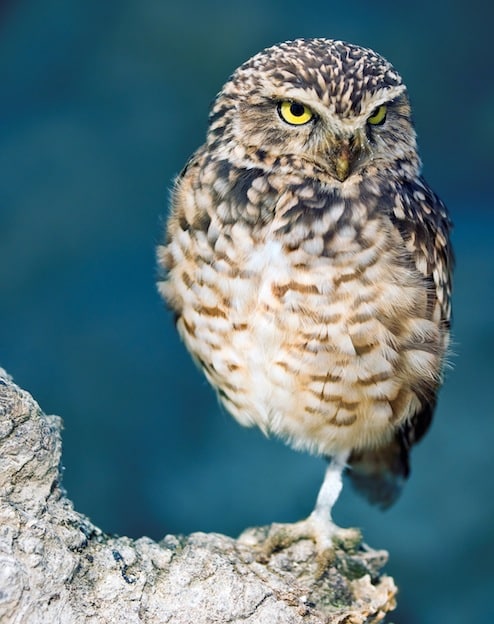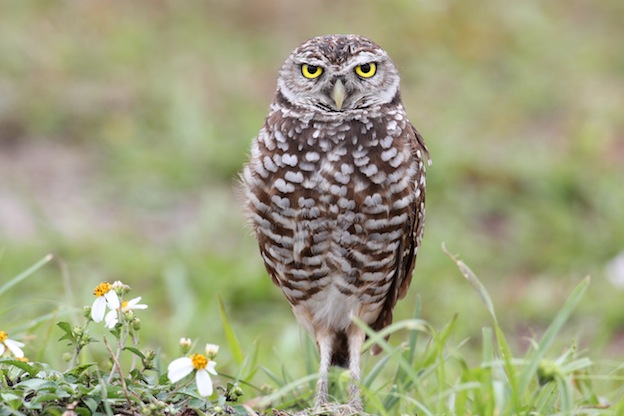Burrowing Owl – Athene cunicularia
Description
The Burrowing Owl happens to have legs that are much longer than any other species of owl. This is a small species of owl with a large head and no visible ears. They are a sandy brown color with white along the belly region. They are only about 9 inches tall and weigh less than one pound.
Distribution
The grasslands are the main location where the Burrowing Owl can be identified. They are found throughout both North America and South America. Almost all of them are found living around Mexico. Other locations for them include Florida and the Caribbean. During the winter months many of them move into Louisiana and Texas.
They are ground dwellers which is a very unique characteristic for an owl. They often make their home on grazing lands and farm land areas.

Behavior
The Burrowing Owl lives on the ground and it is one of the few species that is active during the daylight hours. They are known to make 17 different sounds which is much more than any other species of owl out there. Even after careful research though it still isn’t known what most of these sounds mean. Some of them have been identified for mating and for territorial purposes.
It isn’t known where many of them from the Canada area go during the winter months. There is still research about this behavior being conducted. There are some efforts in place to tag these owls and then use electronic devices to track them. Yet it can be an expensive and difficult process so the final plans are still being worked out. These are very different types of owls than other species which is why there is such a focus on them.
Diet /Feeding
There are plenty of food sources out there for the Burrowing Owl to consume. They include lizards, birds, rodents, and a variety of small insects. They are excellent hunters that will find a perch well above the ground where they can view the surroundings and then dive in for the prey.
They are also known to hunt in cycles. For example they may spend a full 24 hours hunting and then eating. Afterwards they will have a period of 12 hours or more where they don’t eat. This is to give them time to create the pellets that they will regurgitate. Once those pellets are out of the body they will begin the cycle of eating again.
They can consume half of their own body weight when they are feeding.

Reproduction
The males are extremely vocal when it is time for them to attract a mate. They make the common who who sound that is familiar to most people. These calls will attract a female who will respond with her own sounds. The nest that the couple makes will be created underground.
The female can lay from 6 to 12 eggs at a time. The male will bring food to the female during the incubation period as she won’t leave her eggs. He is also there to offer her support and to prevent predators from bothering her or the eggs. The incubation period is short – about two weeks. The young will go on their own when they are about 6 weeks old.
They have an average life span of 10 years both in the wild and while in captivity.
Conservation
The Burrowing Owl has been classified as an at risk species since 1978 in Canada. Nesting boxes have been placed in many areas of Canada to give these owls a way to successfully mate and to feel safe while doing so. In spite of this they were upgraded to endangered status in the early 2000’s.







